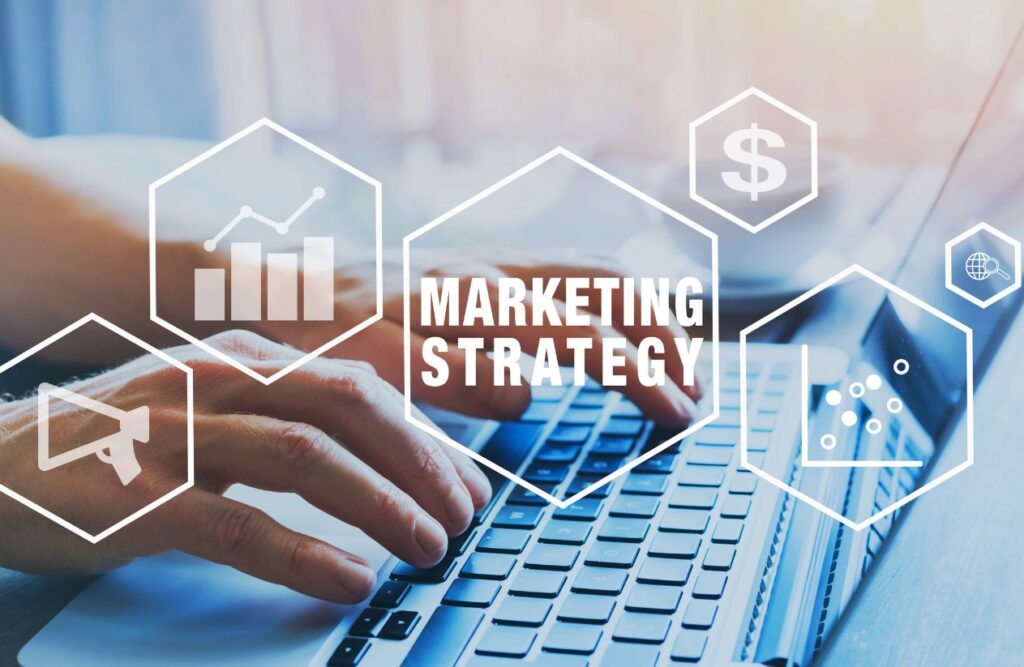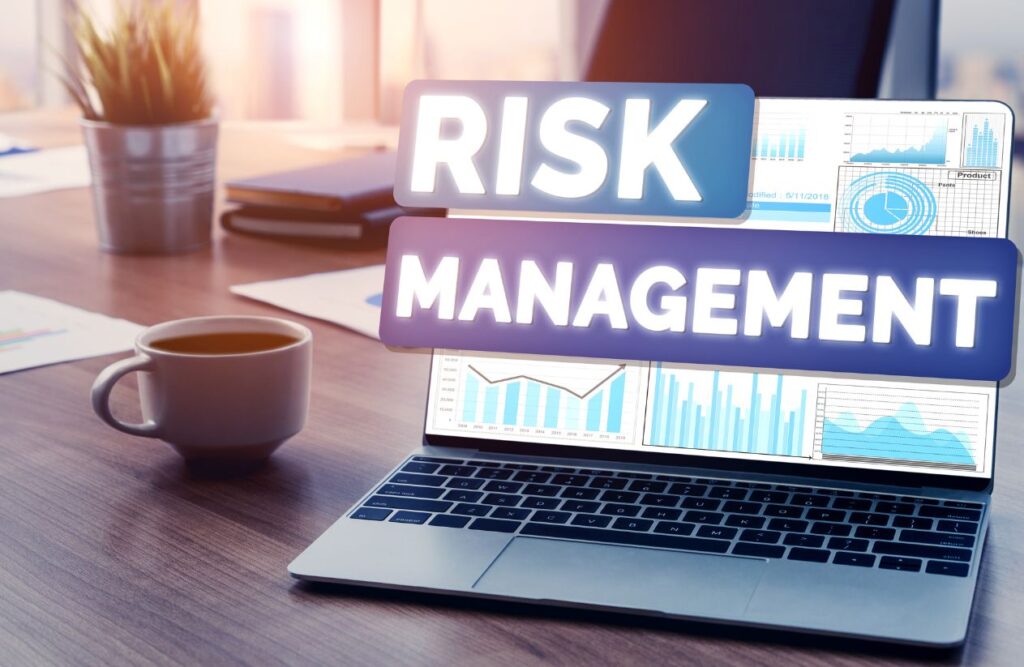Ever stared at a blank calendar, tasked with orchestrating an event for hundreds, or even thousands? It’s a symphony of moving parts, where every detail, from the lighting to the latte art, feels like a high-stakes decision.
The sheer scale can feel overwhelming, but the potential for impact? Absolutely exhilarating. This isn’t just about putting on a show; it’s about crafting an unforgettable experience, building connections, and achieving significant goals.
That’s why we’ve put together this ultimate checklist. It’s designed to transform the daunting process of planning large-scale events into a clear, manageable journey, guiding you from initial concept to flawless execution.
Consider this your strategic roadmap to turning grand visions into seamless, resounding victories, ensuring every moment shines.
The Blueprint for Brilliance: Laying the Groundwork

Before the first attendee even thinks about registering, the real magic of any successful large-scale event begins with meticulous groundwork. Think of this as building the unshakeable foundation for your masterpiece.
This section of our Checklist for Planning Large-Scale Events dives into the crucial initial steps that set the stage for everything that follows.
Defining Your Event’s North Star
Beyond simply having a “purpose,” what’s the single most important outcome you want to achieve with this event? Is it to launch a groundbreaking new product, foster a vibrant community, establish your brand as a thought leader, or drive significant fundraising?
Understanding this core objective is like finding your event’s North Star – it will guide every subsequent decision, from selecting the perfect venue to curating compelling content.
To truly hit your mark, you’ll want to set SMART goals:
- Specific: Instead of “increase attendance,” aim for “increase attendance by 20%.”
- Measurable: How will you track progress? (e.g., ticket sales, social media engagement).
- Achievable: Are your goals realistic given your resources and timeframe?
- Relevant: Does the event align with your overall organizational objectives?
- Time-bound: When do you expect to achieve these goals?
Equally vital is your initial budget allocation. This isn’t just about listing expenses; it’s the art of realistic financial forecasting. Overlooking potential costs early on can lead to headaches down the line, so factor in everything from venue rental and talent fees to marketing and contingency funds.
Hand-in-hand with the budget, a preliminary timeline is essential for mapping major milestones. This rough sketch evolves, but it provides a crucial framework for key deadlines and dependencies.
Assembling Your A-Team (and Empowering Them)
No event planner is an island, especially when the guest list runs into the thousands. Think of your team as the orchestra, and you, the conductor. Beyond just being “skilled,” the importance of diverse expertise and complementary personalities cannot be overstated.
You need logistics wizards, marketing mavens, sponsorship gurus, and customer service champions, each bringing their unique strengths to the table.
Clearly defined roles are paramount. Who owns venue liaison? Who’s in charge of social media campaigns? When everyone knows their specific responsibilities, accountability soars, and tasks don’t fall through the cracks.
Effective communication protocols are the glue that holds it all together. Regular check-ins, whether daily stand-ups, weekly strategy sessions, or utilizing shared project management tools like Asana or Trello, ensure everyone remains on the same page, issues are flagged early, and collective progress is celebrated.
Deep Dive into Your Audience’s Heartbeat
Understanding your audience isn’t just about basic demographics like age or location; it’s about a deep dive into their heartbeat – their psychographics. What truly motivates them?
What are their pain points, aspirations, and preferred ways of engaging? This nuanced understanding is critical for tailoring an experience that resonates deeply.
To uncover these insights, leverage various methods:
- Surveys: Direct questions about preferences and expectations.
- Focus Groups: In-depth discussions to gauge reactions and gather qualitative data.
- Social Listening: Monitoring conversations on platforms like X (formerly Twitter) or Reddit to understand trending topics and sentiment.
- Competitor Analysis: What are similar events doing, and what’s working (or not working) for them?
The insights you gain from this research should shape every aspect of your event, from the type of content presented and the speakers you invite, to the catering choices and the overall atmosphere.
Tools like SurveyMonkey for surveys, or social media analytics platforms like Brandwatch or Sprout Social, can provide invaluable data to help you truly get inside your audience’s head.
The Art of Seamless Execution: Bringing Your Vision to Life

You’ve laid the groundwork, you’ve assembled your dream team, and you know your audience inside out. Now comes the exhilarating part: bringing your vision to life! This phase of planning large scale events is where all that meticulous preparation transforms into a tangible experience.
It’s less about static planning and more about dynamic management, adapting in real-time to ensure every moment unfolds flawlessly.
Masterful Logistics & Vendor Orchestration
Think of execution as a finely tuned machine, and logistics are its gears. This isn’t just about ticking boxes; it’s about the dynamic management of countless moving parts. When selecting your venue, look beyond just size.
Consider its accessibility for attendees, the amenities it offers (think green rooms, loading docks, power capabilities), and most importantly, the vibe. Does it align with the atmosphere you want to create?
Vendor management is another critical piece. Building strong relationships with your suppliers – caterers, AV teams, decorators, security – is key. Ensure you have clear, concise contracts that outline expectations, deliverables, and, crucially, contingency clauses for any unforeseen hiccups.
On-site, focus on the attendee journey: how do they arrive, navigate the space, access information, and depart? A detailed “run of show” document, outlining every minute of the event from setup to teardown, is indispensable. And don’t skip the pre-event rehearsals! They’re your chance to iron out kinks and ensure everyone knows their cues before the curtain rises.
Crafting Unforgettable Attendee Experiences
Engagement is good, but creating moments that truly resonate is what makes an event unforgettable. This goes beyond just having people show up; it’s about crafting experiences that stick.
Think about incorporating interactive elements that encourage participation, not just passive observation. Live polling during a keynote, dedicated Q&A sessions, gamification with leaderboards, or thoughtfully designed networking zones can turn attendees into active participants.
Personalization is another powerful tool. Can you offer custom schedules through an event app, or tailor content tracks based on attendee interests? Even subtle touches can make individuals feel valued. And don’t underestimate the power of sensory experience.
Thoughtful lighting can set a mood, crystal-clear sound ensures messages are heard, even subtle aromas can enhance an atmosphere, and visually stunning aesthetics leave a lasting impression. Consider innovative examples like interactive art installations that attendees can contribute to, or AI-powered networking apps that intelligently connect like-minded individuals.
Harnessing the Power of Technology (Your Event’s Backbone)
In today’s world, technology isn’t just a nice-to-have for events; it’s the backbone. We’re far beyond just digital invitations. Strategic tech integration can streamline operations and elevate the attendee experience.
Robust registration and ticketing platforms are essential for efficiency and capturing valuable attendee data. A dedicated event app can be a game-changer for navigation, personalized agendas, real-time updates, and even direct communication.
Consider live streaming and hybrid options to expand your reach far beyond the physical venue, allowing a global audience to participate. And never forget the unsung heroes: on-site tech support.
Ensuring reliable Wi-Fi, ample charging stations, and readily available technical assistance can prevent frustrating bottlenecks and keep your event running smoothly. However, with great tech comes great responsibility. Briefly, always prioritize data security and privacy in all your event tech choices, ensuring attendee information is protected and compliant with regulations.
Beyond the Buzz: Marketing Strategies That Fill Seats

So, you’ve got a brilliant event concept and a solid plan. Now, how do you make sure the right people actually show up? This is where innovative marketing strategies come into play, transforming your event from a great idea into a bustling reality.
This section of our Checklist for Planning Large-Scale Events is all about getting those seats filled and creating a buzz that’s impossible to ignore.
Social Media as Your Megaphone
Forget simply posting a flyer online; social media is your most powerful megaphone for event promotion. It’s about crafting a dynamic content strategy tailored to each platform. On Instagram and TikTok, think visual storytelling: high-quality images, short, engaging videos, and behind-the-scenes glimpses that build excitement. For LinkedIn, focus on professional networking and thought leadership content.
Beyond just pushing out information, encourage user-generated content. Run contests, create fun challenges, or launch unique hashtag campaigns that invite your potential attendees to participate and share. And don’t shy away from paid social.
Targeted ads and retargeting campaigns can ensure your message reaches precisely the audience segments most likely to convert, maximizing your marketing spend.
The Influence Factor: Smart Partnerships
In a world saturated with information, trust is gold. That’s why smart partnerships, particularly with influencers, can be a game-changer. But it’s not just about chasing the biggest names. Consider micro-influencers or industry leaders who have a highly engaged, niche audience that aligns perfectly with your event’s theme. Community advocates, too, can be powerful allies.
The key here is authenticity. Genuine alignment between the influencer and your event matters far more than a massive follower count. Attendees can spot a forced endorsement a mile away!
Look for co-marketing opportunities, like cross-promotion with your sponsors or other relevant partners, to expand your reach organically. When it comes to measuring success, track metrics like referral traffic, engagement rates on sponsored posts, and direct ticket sales attributed to influencer codes to truly understand your ROI.
The Allure of Exclusive Offers & Scarcity
Nothing gets people moving like the fear of missing out on something truly special. This psychological trigger is incredibly effective in event marketing. Go beyond simple “early bird” discounts.
Think about tiered pricing that offers different levels of access and perks, exclusive VIP experiences, or attractive group discounts that encourage collective attendance.
Create a palpable sense of urgency with countdown timers on your website and social media, or limited-time offers that incentivize immediate action. And for those who’ve supported you before, consider loyalty programs that reward past attendees with priority access or special discounts.
These strategies don’t just drive sales; they build a sense of community and appreciation, turning one-time attendees into loyal advocates.
Shielding Your Success: Proactive Risk Management

Even with the most brilliant plans and marketing, the unexpected can always happen. That’s why proactive risk management isn’t just a formality; it’s a non-negotiable pillar when planning large-scale events. It’s about anticipating potential bumps in the road, preparing for them, and ensuring everyone involved – from your team to your attendees – remains safe and sound.
Unmasking Potential Pitfalls
The first step in building a robust safety net is to thoroughly identify potential risks. Go beyond just “hazards” and categorize them: are they operational (e.g., equipment failure), financial (e.g., budget overruns), reputational (e.g., negative press), or health & safety (e.g., medical emergencies)?
A risk assessment matrix, which evaluates both the likelihood of a risk occurring and its potential impact, can help you prioritize where to focus your efforts.
Don’t go it alone here. Stakeholder collaboration is crucial. Engage with local authorities (police, fire department), emergency services, and legal counsel early in the process. Their insights into regulations and potential local challenges are invaluable.
Think about common pitfalls: a sudden power outage, unexpected crowd surges, or a last-minute speaker cancellation. By acknowledging these possibilities, you can prepare.
Crafting Your Safety Net: The Mitigation Playbook
Once you’ve identified the risks, it’s time to craft your “mitigation playbook” – a detailed, actionable response plan for each scenario. This goes beyond simple “contingency plans.” For instance, what’s your clear communication chain if there’s an emergency?
Where are the evacuation routes, and are they clearly marked? Do you have designated first aid stations and trained medical personnel on site?
Robust security measures are paramount. This includes everything from controlled access points and thorough bag checks to strategically deployed security personnel and clear crowd control techniques. And, of course, insurance is your non-negotiable safety net.
Ensure you have comprehensive coverage that protects against a wide range of liabilities. A deeper insight here: don’t just write these plans; emphasize the importance of regular drills and comprehensive staff training. A plan is only as good as your team’s ability to execute it under pressure.
On-Site Vigilance & Compliance
The planning doesn’t stop when the doors open. On-site vigilance is key to dynamic risk monitoring during the event itself. This means having eyes and ears everywhere, constantly assessing the environment for new or escalating risks.
Before the event, ensure all permits and licenses are secured – from fire safety certificates to noise permits – leaving no legal box unticked.
Accessibility is another critical aspect of compliance and inclusivity. Is your venue accessible for individuals with disabilities? Are there clear pathways, ramps, and accessible restrooms?
Finally, empower your staff with the knowledge and authority for real-time incident response. When every team member knows how to act swiftly and effectively, minor issues can be resolved before they escalate, ensuring a safer and smoother experience for everyone.
Related Content:Also read our article about the Benefits of Planning Your Corporate Event Well in Advance
The Afterglow & The Analytics: Learning from Every Success

The final applause has faded, the last attendee has departed, and the venue is quiet once more. But for the savvy event planner, the work isn’t truly over.
This “afterglow” phase is where the real learning happens, transforming your recent triumph (or even a few stumbles) into invaluable lessons for future endeavors. It’s about meticulously measuring success and extracting insights to refine your approach.
The Numbers Game: Quantifying Your Triumph
While attendance is often the most obvious metric, a true post-event analysis goes much deeper. How many people converted from registration to actual attendance? What were the peak session attendance numbers?
How actively did attendees use your event app, and which features were most popular? Dive into your social media engagement: impressions, mentions, sentiment analysis – what was the overall buzz like?
Then, there’s the financial deep dive. Go beyond simple revenue versus expenses. Calculate your profit margins, determine the cost per attendee, and rigorously assess the ROI of your sponsorships.
Tools like dedicated analytics dashboards, CRM integration, and robust survey platforms (think Qualtrics or SurveyMonkey) are your best friends here, providing the hard data needed for an impartial evaluation of your event’s impact.
The Human Element: Listening to Every Voice
The numbers tell what happened, but the stories tell why it mattered. Beyond quantitative data, gathering qualitative feedback is crucial for understanding the true essence of your event’s success.
This means going beyond simple “yes/no” surveys. Ask open-ended questions that invite detailed responses. Monitor social media sentiment not just for mentions, but for the underlying feelings and opinions. Conduct direct interviews with key stakeholders, or even set up anonymous feedback boxes on-site.
The goal is to identify overarching themes: what truly resonated with your audience? What aspects exceeded expectations, and what, if anything, fell flat? This human insight allows you to weave together the narrative of your event’s impact, capturing the intangible successes that numbers alone can’t convey.
The Post-Mortem Power-Up: Refining for Tomorrow
An often-overlooked yet vital component of post-event analysis is the operational review, or “post-mortem.” Gather your entire team for an honest, constructive self-assessment. What logistical elements flowed seamlessly? Where were the bottlenecks? Did the marketing strategy hit its targets? How did each vendor perform?
Identify both triumphs and challenges. What worked exceptionally well that you can replicate? What didn’t work, and more importantly, why? These insights are your goldmine for formulating a robust blueprint for future events. It’s crucial to translate these lessons learned into concrete, actionable improvements.
Consider creating a “lessons learned” document or a centralized knowledge base. This institutional memory ensures that each event isn’t just a standalone success, but a stepping stone towards mastering the art of large-scale event planning, continuously enhancing attendee satisfaction and ensuring long-term success.
Conclusion
Ultimately, planning large-scale events is a captivating blend of artistic vision and scientific precision. It demands your creativity to craft truly memorable experiences, seamlessly coupled with the strategic foresight needed for flawless delivery.
As we’ve explored, success hinges on several non-negotiable pillars: meticulous initial planning, dynamic on-site execution that adapts to challenges, smart marketing strategies that genuinely connect, proactive risk management to safeguard every detail, and a commitment to continuous learning through insightful post-event analysis.
Each event you undertake, whether a roaring triumph or a valuable lesson, significantly builds your expertise. So, embrace the exhilarating challenge, trust in your refined process, and confidently tackle your next grand endeavor. The stage is truly yours, and armed with this ultimate checklist, you are more than ready to create something spectacular.






